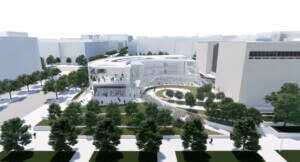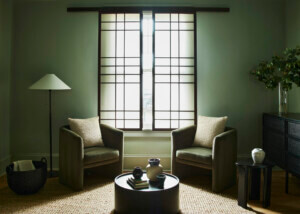Johns Hopkins University president Ron Daniels admits that creating a new model for interdisciplinary education wasn’t necessarily his first priority when Hopkins announced plans in 2019 to acquire the former home of the Newseum in Washington, D.C. for the new Johns Hopkins University Bloomberg Center.
Daniels said he primarily wanted to find a building where Hopkins could locate its Washington-based graduate-level programs under one roof and avoid “massive deferred maintenance problems” associated with the three older buildings it occupied near Dupont Circle.
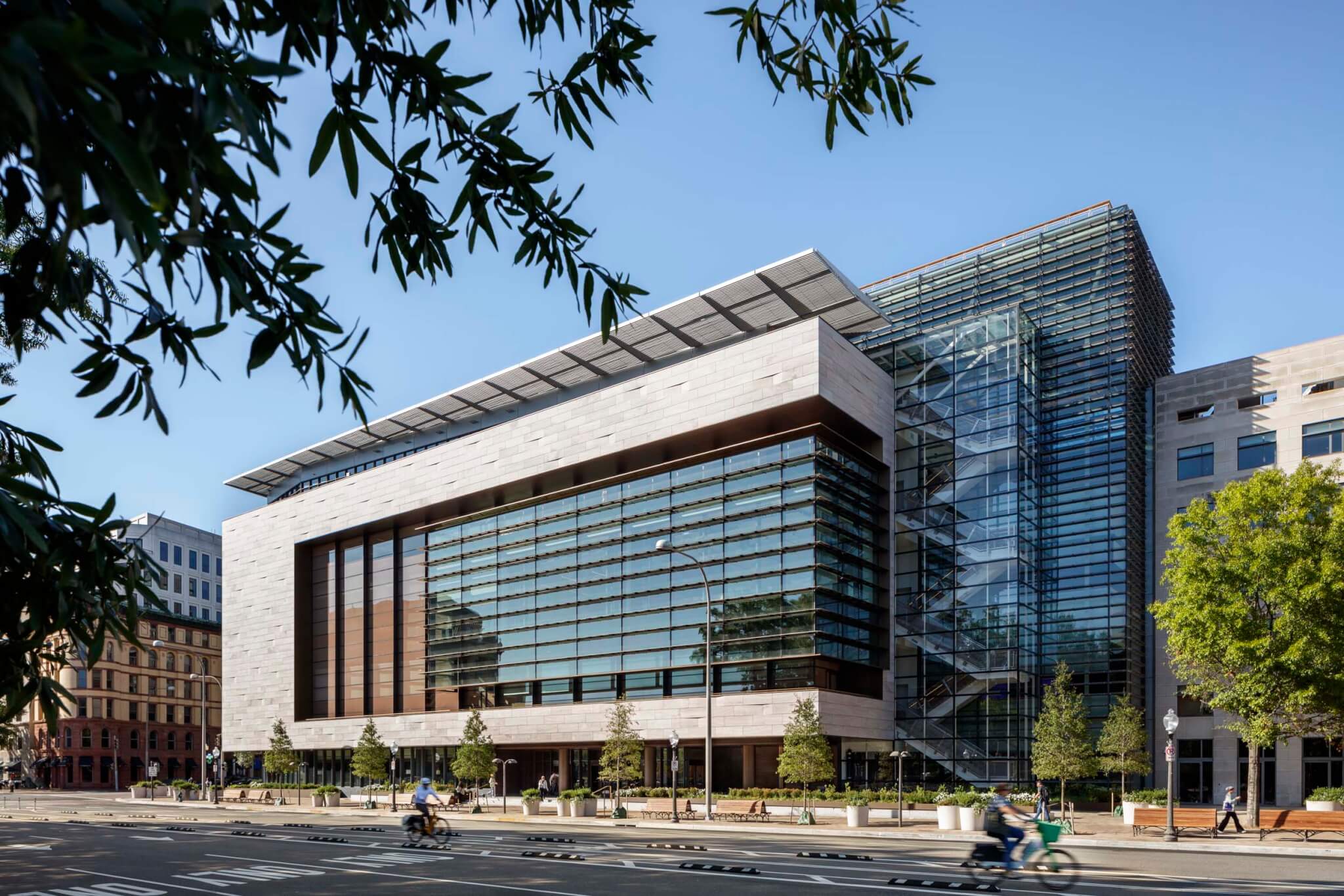
“We knew that we sooner or later were going to have to do something about those three buildings, which were literally falling apart on us,” he said. “That was the immediate catalyst.”
In the process of addressing that pragmatic issue, Hopkins ended up creating much more. The Johns Hopkins University Bloomberg Center is a high-profile, state-of-the-art academic facility that extends the university’s visibility and reach in the nation’s capital and maximizes the impact of its research and scholarship, while increasing opportunities for interaction between students and faculty from its different divisions.
A rare case study in adaptive reuse of a prominent building on one of America’s best-known avenues, the conversion also shows the potential benefits to clients of working with a building’s original architect. Ennead Architects, the current name of the original designer Polshek Partnership, returned for the project.
At 435,000 square feet, spanning 12 levels, the Bloomberg Center was created within the shell of the structure that formerly housed The Newseum, an interactive attraction that was dedicated to journalism and the promotion of free speech. Designed by Polshek Partnership for the Freedom Forum to replace its original museum in Rosslyn, Virginia, the Newseum opened at 555 Pennsylvania Avenue N.W. in 2008 and closed in December of 2019 after running into financial difficulties.

When the Freedom Forum put its Pennsylvania Avenue property on the market, Hopkins—with its two flagship campuses and other holdings in Baltimore, including its historic Peabody Institute—was looking for a location where it could consolidate its Washington-based programs.
Any buyer would have been limited in what it could do on the site, which is subject to strict height controls and design review by the National Capital Planning Commission and U.S. Commission of Fine Arts. But Hopkins welcomed the opportunity to raise its profile and move closer to the White House and U.S. Capitol.
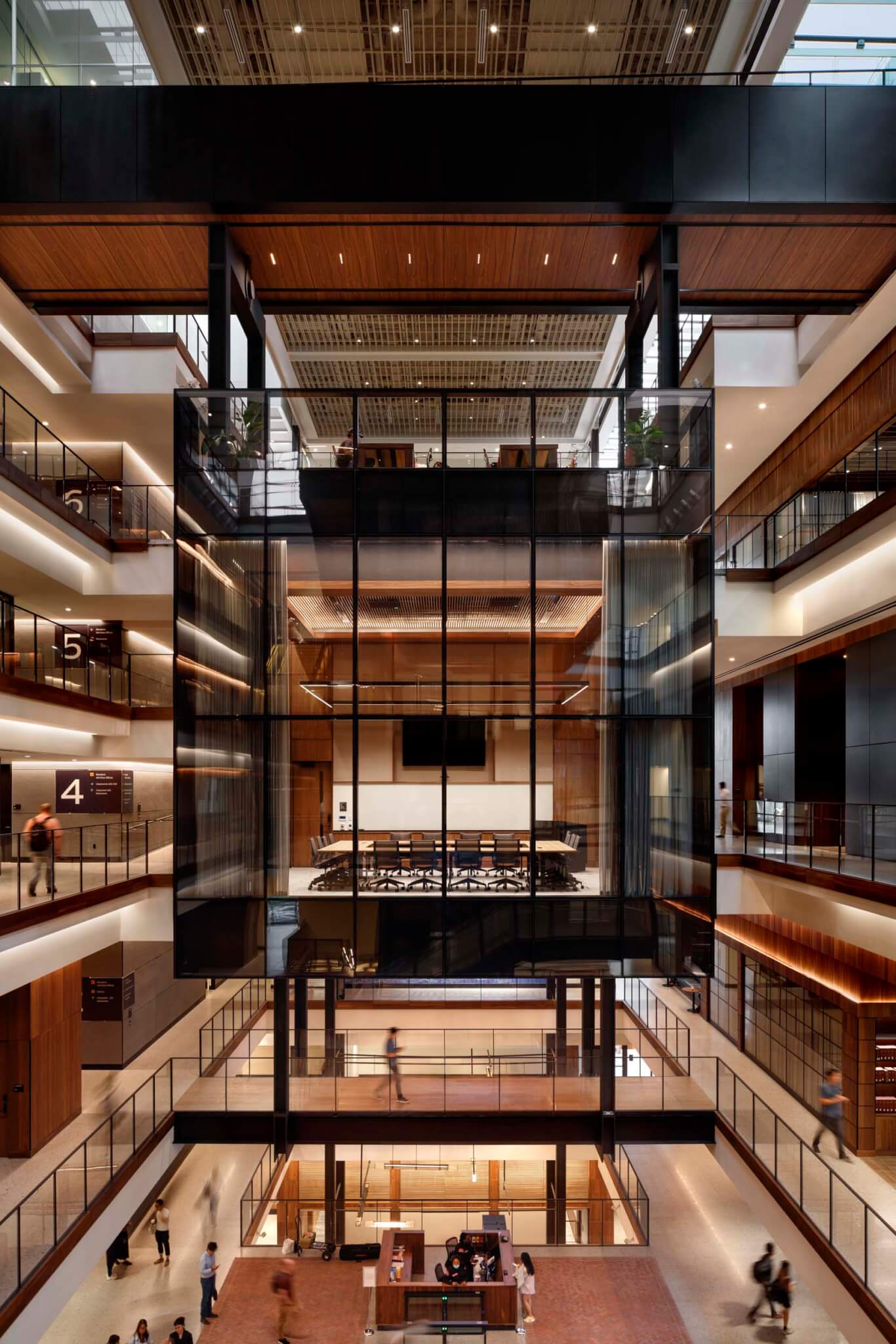
With its combination of uses at one address the Bloomberg Center takes interdisciplinary education to a new level, providing a place where students and faculty will engage not only with one another but with national and international leaders.
“This building manifests an idea that’s very powerful at Johns Hopkins, and that is that the most serious dilemmas of our time are not solved by single actors alone,” Daniels said. “What really is required in this moment is for multiple disciplines, multiple experts from across the spectrum to be able to work together. That’s the magic of Johns Hopkins.”
Michael Bloomberg—the founder of Bloomberg LP and Bloomberg Philanthropies, former New York City mayor and Hopkins alumnus for whom the building is named—said the building represents “an exciting new chapter” for Hopkins and Washington’s Pennsylvania Avenue corridor.
Hopkins announced plans to acquire the property in January of 2019 and completed its acquisition in June 2020. The purchase included 135 market-rate apartments that weren’t part of the renovation. To redesign the museum building for academic uses, Hopkins worked with three architecture firms: Ennead Architects as exterior architect, Rockwell Group as interior architect, and SmithGroup as architect of record. Oehme, van Sweden & Associates was the landscape architect. Many of the engineers who worked on the original design returned for the transformation.
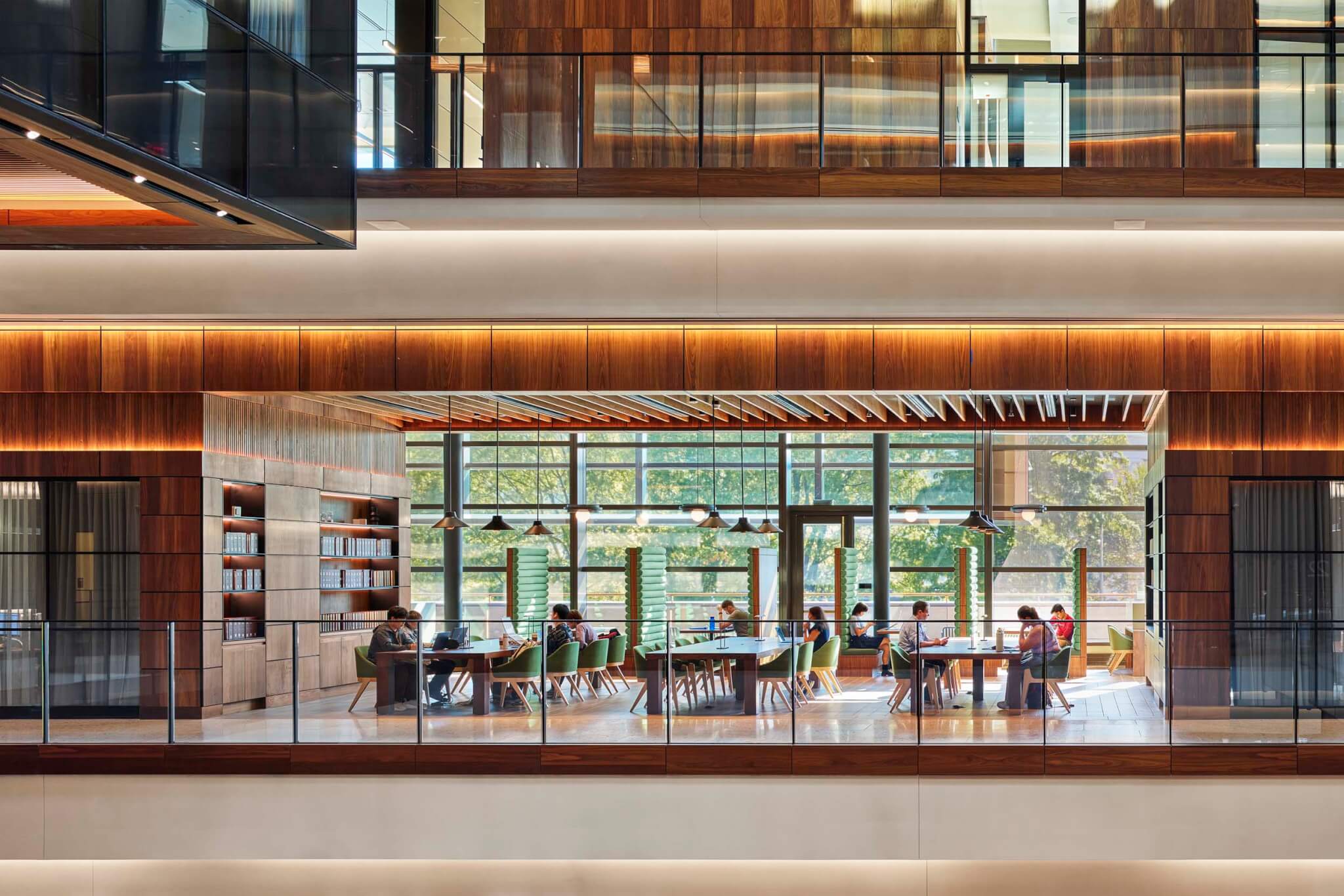
Bloomberg was instrumental in bringing Ennead, SmithGroup, and Rockwell Group together. It was at the suggestion of Bloomberg that Hopkins bring on Rockwell Group for the interior.
Construction took three years, with Clark Construction as the general contractor. The project’s total cost was $647.5 million—$372.5 million to purchase the property and $275 million for construction.
Opened in August for the fall semester, the building has 10 levels above ground and two below. It can accommodate more than 2,500 students and 650 faculty members. The center is anchored by Hopkins’ School of Advanced International Studies (SAIS), Carey Business School, Krieger School of Arts and Sciences, Peabody Institute, and a new School of Government and Policy, but will host programming from every Hopkins division. Its various spaces provide opportunities for students from throughout the university to conduct research, take classes and attend concerts and lectures in Washington—supplementing Hopkins’s offerings in Maryland.
In addition to classrooms and meeting spaces, the building contains a 375-seat theater with a 640-square-foot proscenium stage and 7,000 square feet of backstage support space, a fourth-level event space called The Link, a multimedia suite for live broadcasts, three floors of conference space, a fitness and wellness center, a banquet hall, 26 enclosed study rooms, 38 high-tech classrooms of various capacities, and 435 seats for informal study. Four large-scale works of art were commissioned for the building and an abstract bronze sculpture was relocated from SAIS’s former home. There are future plans to add a restaurant and cafe. An art gallery will open next year with exhibits drawn from the Irene and Richard Frary Collections at Hopkins, and others.
Within the design team, Ennead served as the exterior architect with responsibility to give the building a new look as seen from Pennsylvania Avenue. It also helped in early design stages to reconfigure the interior to suit the building’s new purpose and design a theater and 16,888 square feet of landscaped roof terraces.
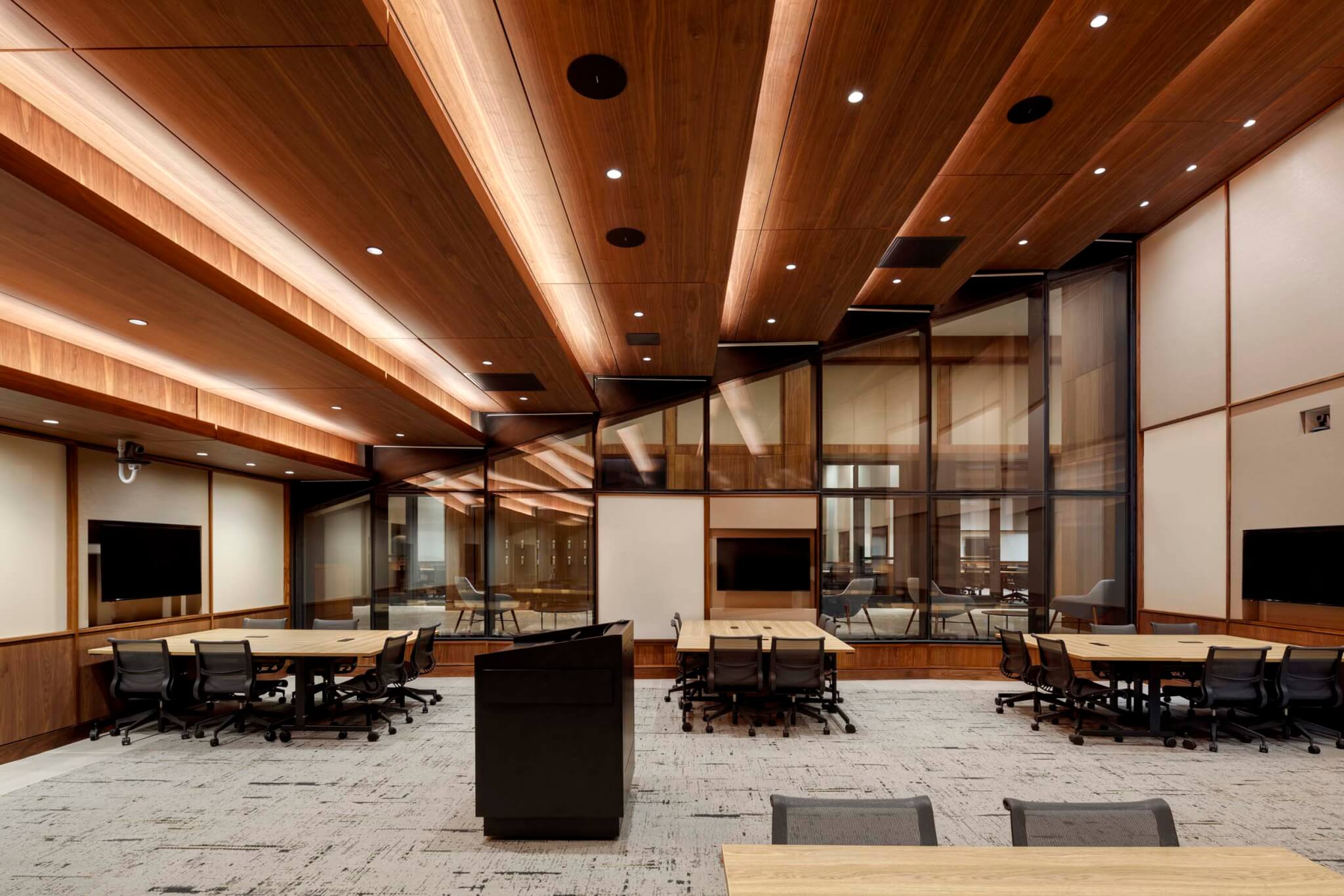
During a panel discussion about the design process, Ennead design partner Richard Olcott said it’s a rare opportunity for an architect to revisit an earlier design and reimagine it for an entirely new purpose. Olcott said he remembers going to the interview when Polshek Partnership was under consideration to design the Newseum.
“It’s certainly an incredible opportunity to redo a building that you’ve done once already,” he said. “Some people might find that too difficult to do, but we find it to be an incredibly interesting challenge, to completely rethink it inside and out.”

Olcott acknowledged that some architects can be resistant to the idea of altering one of their own buildings. He relayed a story about a friend who bought a house in Connecticut designed by the late Charles Gwathmey, who was still alive at the time, and asked Gwathmey to design an addition for it. The friend said Gwathmey responded: “Don’t you dare touch it!”
Although Hopkins’ leaders liked the property’s size and location, Olcott said, they didn’t want people always thinking of the building as “the former Newseum.” This meant reinterpreting the facades and interiors to align with Hopkins’s mission, and removing reminders of the previous use, while retaining a strong presence on Pennsylvania Avenue.
“Our challenge was really how to recreate, to remake, an identity, a new progressive identity, for Johns Hopkins, and undo an identity that the building previously had,” Olcott said.
The approach involved filling in the giant glass “window” that the Newseum had facing Pennsylvania Avenue—“breaking the frame”—and recladding the south facade with the same Tennessee marble found on the National Gallery of Art and its East Wing across the street. The redesign also eliminated the building’s First Amendment Wall, which bore the words from the First Amendment of the U. S. Constitution, and street-level windows where the Newseum displayed changing front pages of newspapers.
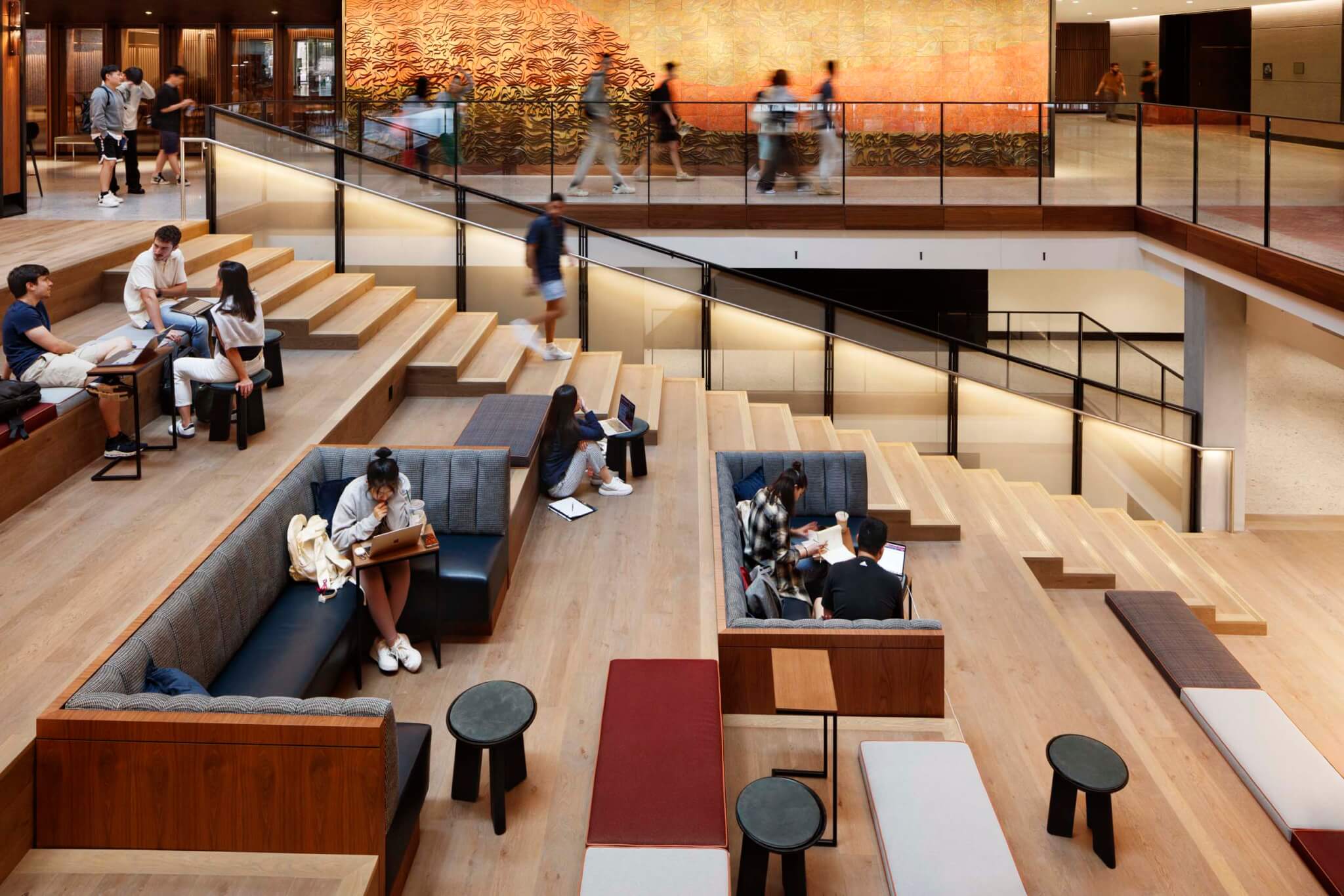
The result is a composition that expresses the building’s transformation without expanding its envelope. The interior also went through a complete transformation. In many ways, designers said, the Bloomberg Center needed the exact opposite of the Newseum’s layout, which required visitors to follow a highly-specialized linear route as they moved from gallery to gallery.
Contractors demolished much of the interior, including 50,000 square feet of floorplates. Part of the feat is that they had to both remove and bring in large steel members without a tower crane, due to the restrictions on the site, while keeping the structure stable.
The transformation entailed removing all of the Newseum’s artifacts, which weren’t part of Hopkins’s purchase. That included the Newseum’s fragment of the Berlin Wall, the Watergate Hotel door burglars broke through in 1972, the desk Tim Russert used on Meet the Press, and the galleries that housed them. The building’s one-way circulation sequence across multiple levels was antithetical to the sort of open, collaborative environment that Hopkins’ planners desired.
The architects took advantage of the carved-out volume to reconfigure the floorplates to increase the building’s square footage, modify mechanical systems, and let in more natural light. The Bloomberg Center contains a mix of flexible spaces designed to break down barriers between academic disciplines and encourage impromptu conversations by students and faculty from different divisions.
The main interior space, designed by Rockwell Group, is a seven-story atrium, where a 70-foot treehouse-like stacked assemblage of glass-enclosed classrooms and lounges hovers over a central gathering space. On the east side of the atrium, a “floating” glass classroom hangs from a pair of girders, seemingly suspended in air. Wraparound staircases and bridge-like walkways connect the transparent classrooms to foster interplay between disciplines.
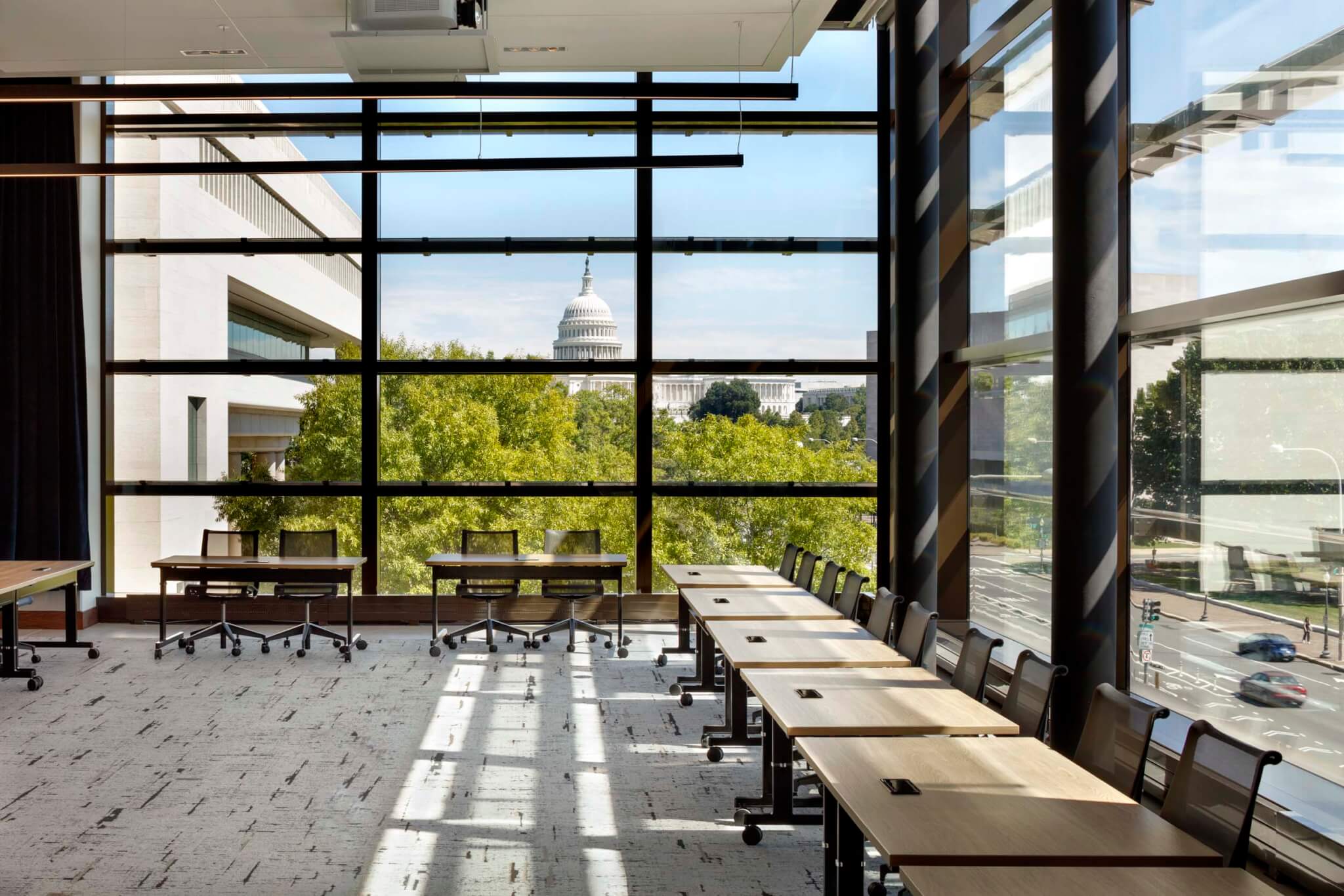
“In some ways, working at a building where there’s already an existing shell, instead of being limiting is actually freeing, because you can focus on programmatically what you’re going to do,” said Rockwell Group founder and president David Rockwell. “As I got to know more and more about the kind of place Hopkins wanted in particular—and I think it’s relevant for thinking about how to reuse a building—one of the interesting goals was how to create a series of places where people want to be, in person. An in-person building that was in some ways the strongest argument against a Zoom class.”

The large-scale works of art were created by Ethiopian installation artist Elias Sime; Brazilian muralist Sandra Cinto; Pakistani American mosaic artist Shahzia Sikander; and the late American painter Sam Gilliam—his final piece, completed months before his death in 2022. Nancy Rosen was the curator. Barbara Hepworth created the relocated sculpture, now outside the Pennsylvania Avenue entrance. Visible in the atrium is a section of the Berlin Wall, a gift to SAIS from the Berlin Senate and a reminder of the Berlin Wall fragment that the Newseum displayed.
Olcott said Bloomberg had a say in many of the design decisions, including the way the Tennessee marble was applied to the front facade and the touches that refer back to the Homewood campus, including a stepped lounge in the atrium called The Beach—a reference to the sloping lawn in front of the Milton S. Eisenhower Library in Baltimore—and inlaid brick flooring on the building’s first level set in a herringbone pattern.
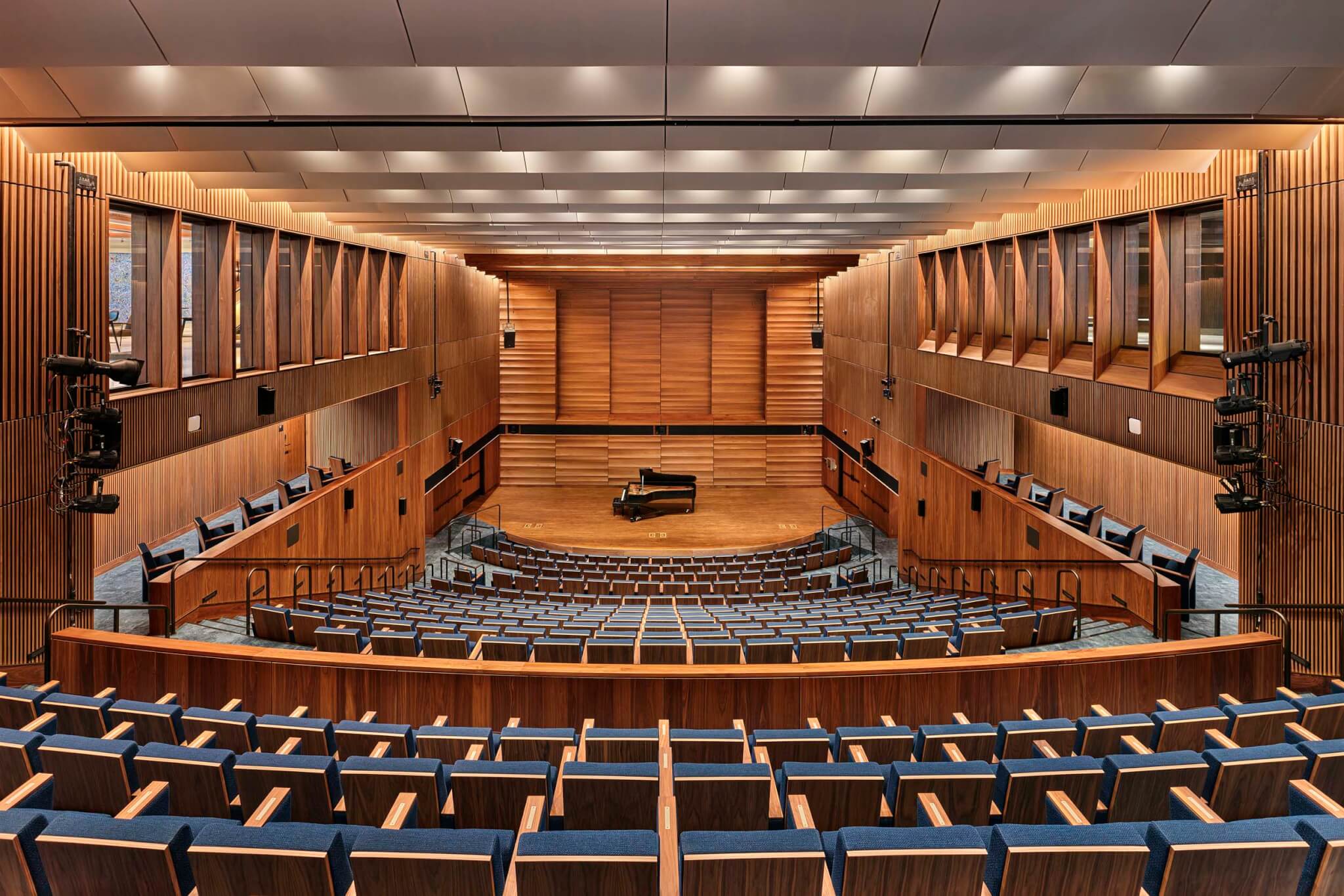
In the case of the Bloomberg Center, Olcott said, Ennead welcomed the chance to reimagine a building that it designed once before, while addressing the new owner’s needs and the latest vision for Pennsylvania Avenue: “The most sustainable building you can have is one you already have, and so the idea of redoing this building instead of building a new one somewhere else is not only responsible but generates an even more creative set of responses.”
Rockwell said he believes a creative architect can always come up with more than one solution to a design challenge. “Any architect who says there’s only one way to do it,” he said, “is someone who ran out of ideas.”
Edward Gunts is a freelance writer and the former architecture critic for The Baltimore Sun.









